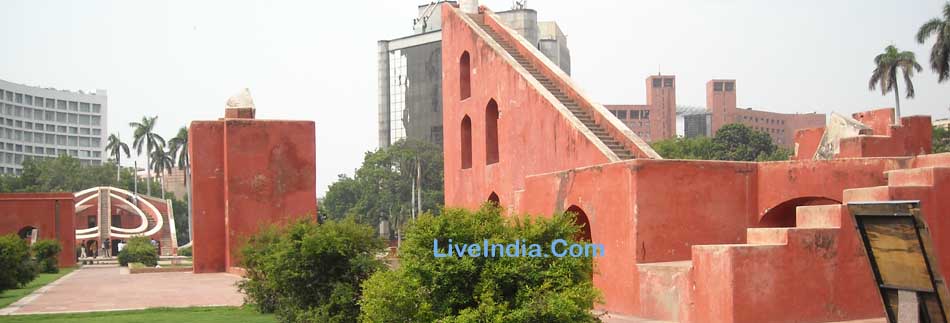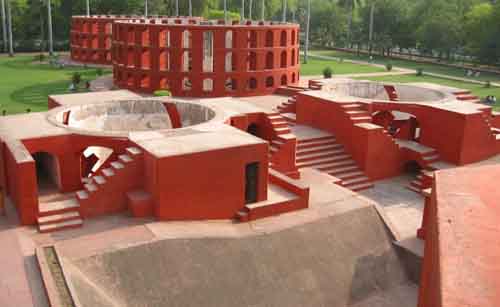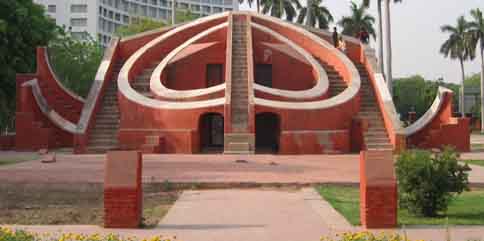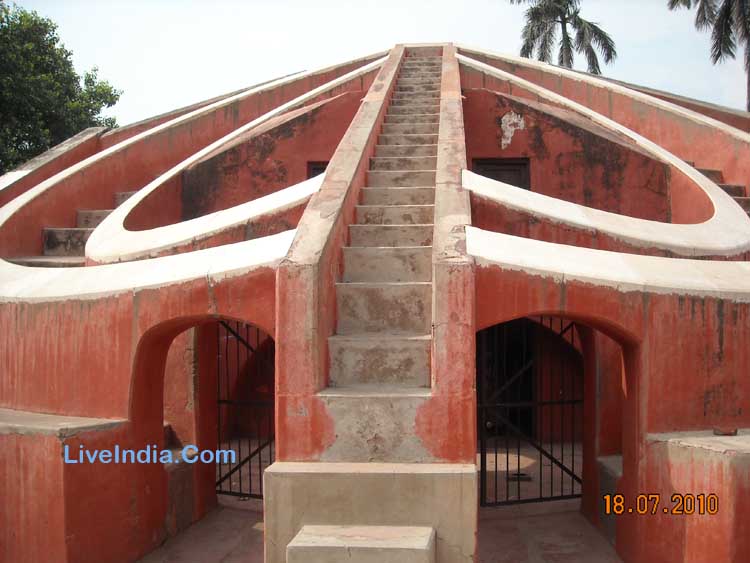 |

|
 |

|

|
|
Jantar Mantar
 Location : On Sansad Marg and opposite NDMC building. About the Builder Maharaja Sawai Jai Singh II, who built the observatories in northern India, was born at AMBER (Near Jaipur) in 1686 AD. He was the eldest son of his father Maharaja Vishnu Singh. He became King of Amber in 1699 A.D. after the death of his father. He saw the rule of five Mughal emperors during his regime (1699-1743). In 1707 AD, he won the areas of Amber, Sambhar & Ajmer from Mughal forces under Emperor Bahadur Shah I. He was granted governorship of Agra and Malwa provinces by emperor Muhammad Shah in 1719 A.D. Maharaja not only proved himself as daring commander and able administrator but also excelled in subjects like astronomy, mathematics, science and town planning. He founded his new capital JAIPUR in 1727 AD. Mughal Emperor Aurangzeb was impressed by his courage & wits and awarded him with the title 'Sawai' (meaning twenty five percent or a quarter more able, courageous, intelligent etc. than his contemporaries). Sawai Jai Singh studied Hindu, Muslim, and European systems of observation and calculations relating to astronomy. For establishing astronomical observatories, he sent intellectuals to European countries and invited European scholars to India. He invented brass instruments for calculating astronomical values and later replaced them with instruments made of brick, lime and clay. On the orders of Muhammad Shah, Sawai Jai Singh II completed Delhi observatory in 1724 AD. Jaipur observatory was built ten years later. Within next 15 years, three more observatories were built by him at Ujjain, Varanasi and Mathura. The last one no longer exists now as it was destroyed by a government contractor Jyoti Prasad little before 1857 AD who bought it for want of materials.  This ' heart shaped ' instrument is situated in the middle of Misra Yantra. The stairs in the centre divide this instrument in two parts. The walls housing the stairs are exactly similar in all respect to the walls on eastern and western edges. There are four graduated semi-circles in this instrument which are in different planes. The centers of these semi circles fall on middle walls where two holes are provided for fixing a pointer or a rod for observing its shadow on these semi-circles. This instrument was renovated in 1950 AD when graduated marble stones were fixed on all semi-circles. The name of the instrument suggests periodic occurrence of something. It is the time which is never late in reaching a place, how far it is. Hence according to the nomenclature of the instrument, mid day or 12 O' Clock local time of four international places can be found out with this unique instrument as under:- When a pointer of about one foot height is held in the western hole of the wall, its shadow falls on the western semi-circles in the morning hours.The shadow falls on outer semi-circle (marked as A) at 6.52 a.m. Delhi's local time indicates mid day at NOTKEY in Japan. When the shadow falls on inner semi-circle (marked as B) at 7.24 a.m. Delhi local time , it indicates mid-day at SARTICHEW, a town at PIC ISLANDS in the Pacific Ocean. Similarly when the pointer is held in the eastern hole, its shadow falls on eastern semicircles in the afternoon.The shadow falls on inner semi-circle (marked as C) at 4.36 p.m. Delhi local time indicates midday at ZURICH in Switzerland. The shadow at 5.08 p.m. Delhi local time (5.30 p.m. 1ST) falls on outer semi circle (Marked as D) indicates mid-day at GREENWICHn England. Interestingly all these places have ancient observatories.
|
 |
